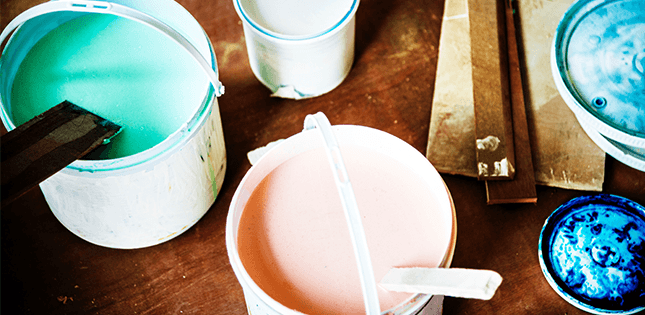The Benefits of Using Low-VOC Paints
- Environment-friendly, as there are no lower levels of ozone formation due to paints.
- The incidence of eye and respiratory irritation from low-VOC paints is uncommon.
- Proven performance equal to that of traditional paints
- No special equipment needed
- Fewer emissions of smog-forming chemicals
- Better indoor and outdoor air quality
- These paints are ideal for commercial applications.
- They are quick drying paints
- Modern paints with low-VOCs are non-yellowing
- Increased UV resistance, flexibility
- Can be rated as healthy paints, as reduced toxins are good for everyone, may it be for kids, pregnant ladies or those with allergies and chemical sensitivities.
- Good for our Earth as these paints help in reducing landfill, groundwater and ozone depleting contaminants.
- Low-VOC paints show good results, in all spheres like coverage and covering flaws on previous coats.
- These are water-Based and can be easily cleaned with the help of soap and warm water.
- These paints off-gas little or no Hazardous Fumes. Therefore painted areas can be occupied sooner, without any complaints related to odour.
- These paints are easier to clean and dispose of.
Types of non-toxic paints:
When you have made up your mind to go in for the healthy and clean alternative to paint your home, non-toxic paint is an ideal solution. While traditional paints often off-gas harmful VOCs into the air as the paint dries, but non-toxic paints contain very few to no VOCs. The amount of VOCs present in particular paints is listed on the paint container’s label. When it comes to choosing which non-toxic paint you would require for your home…there are several options which fall into three main categories:
1. Natural Paints
These paints are made up of completely natural materials. The ingredients for these paints include natural materials such as chalk, clay, natural latex, beeswax, earth and mineral dyes. Along with these natural materials like water, plant oils, plant resins, plant dyes and essential oils are used. Water-based natural paints have no odour, whereas the oil-based paints usually give off a pleasant fragrance of natural oils.
These paints are safest for the environment and the residents. Allergies and sensitivities to these paints are unusual. These natural paints are an excellent solution for the people with respiratory problems, children, pregnant ladies and those having allergies to the synthetic components found in most paints. These natural paints are prepared without using petroleum-based by-products, but they may still contain naturally occurring VOCs from their natural ingredients.
More of the pros of using Natural Paints
These are no doubt the cleanest and safest alternatives to common household paints, but there are fewer options of texture, finish, colour and durability in these paints. The harmful petroleum-based chemicals which are culprits of off-gassing VOCs create the bright colours and high-gloss finishes. So in spite of the fact natural paints are an excellent alternative but are not able to cope up with the harshness of the natural outdoor elements like rain, snow, freezing temperatures and extreme sun. These paints are particularly for indoor use and are ideal for the home with small children and pregnant lady.
2. Zero VOC paints
Zero VOC paints are any paint with VOC’s in the range of 5 grams per litre or less. Although some manufacturers claim these paints have no VOCs, it may contain colourants, biocides and fungicides with some VOC’s. Adding a colour tint to the paint generally brings the VOC level up to 10 grams per litre, which is no doubt quite low.
3. Low VOC paints
Low VOC paints make use of water instead of petroleum-based solvents. Therefore these paint off-gas VOCs much less than their solvent-based counterparts. These paints contain zero or very low levels of heavy metals and formaldehyde. As per EPA standards, the amount of VOCs in paints which are sold as Low VOC paints, should not exceed 200 grams per litre and in varnishes, it should not exceed 300 grams per litre.
But they do emit some smell until dry. For avoiding this problem, one should buy paints that contain VOCs less than 25 grams per litre.







